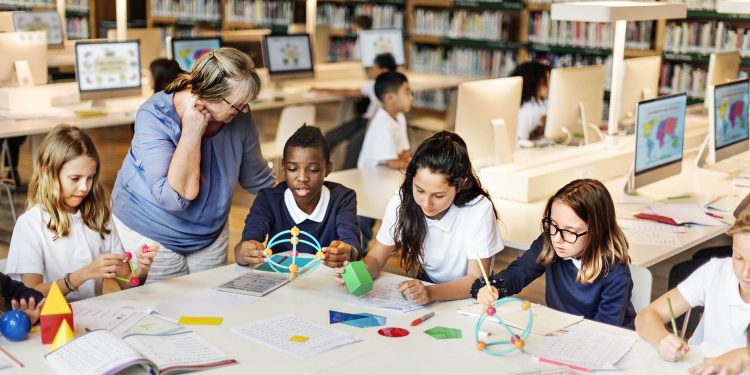Metacognition – What Is It And Why Does It Matter In Classroom

Metacognition is simply knowledge about yourself as a learner and awareness about factors affecting cognition. This kind of self-awareness includes knowledge about strategies that work for achieving goals, and knowledge about why and when use a given strategy, as well as knowledge about comprehension and task performance.
Everyday examples of metacognition can include an awareness that you have difficulty remembering the streets’ names, and reminding yourself that you should try to remember the streets you pass every day on a way to work. The term itself comes from the root word meta, meaning “beyond”, or “on top of”.
Every teacher all around the world should be familiar with the concept of metacognition in order to help students being better learners.
Types of metacognitive knowledge
Declarative knowledge includes learning and memorizing definitions and concepts while performing tasks and knowing how to do something is procedural knowledge.
Conceptual knowledge is a way of understanding the inner connection between concepts, definitions, facts, and this is a level where students can be creative and apply knowledge in real-life situations.
In the teaching process, all of the types of knowledge should be covered to achieve a full spectrum of information acquisition. Including all three types of metacognitive knowledge is essential when it comes to teaching students to be independent learners who are creative problem solvers.
Cycle of metacognition
Metacognition in the classroom can be first introduced as a way of planning to solve a task. As a helpful way to do so, there is a cycle of metacognition that describes steps and elements of proper learning.
- Assess the task – students have a clear picture of what they need to accomplish,
- Evaluate strengths and weaknesses – students think what they already know about the task, and what they need to learn,
- Plan the approach – it doesn’t have to be a detailed plan, but it’s important to realize what needs to be accomplished, how it’s possible to get there, and when it can happen,
- Apply strategies – students take action and monitor the progress,
- Reflect – students look back on the outcome they have achieved, they adjust the approach, and if they didn’t get an outcome they wanted, they simply plan a new strategy, and go back to the first stage (assessing the task), ad start over again.
The cycle of metacognition happens rapidly or it’s stretched over a long time. The cycle of learning and delivering tasks often happens automatically that for students it feels invisible.
Why teach about metacognition
When students are aware of the steps of learning and understanding the topic, they are simply more likely to succeed in college, career, and lifelong learning.
While being aware of the thinking methods and its cycle, students become more effective learners who are able to integrate knowledge in real life, rather than memorize isolated definitions.
If you want your students to be creative thinkers and problem solvers you need to get meta! Which means – to implying metacognitive strategies to your teaching process. Doing it will help students to acquire, retain and transfer new concepts.
Benefits of metacognition in the classroom
- Self-Questioning – students are becoming critical thinkers who ask questions, and look for answers,
- Visual planning – students create annotated drawings that channel their thinking and visualize strategies,
- Concept mapping – students organized their knowledge, by writing keywords, and connect them with ideas that are related to each other,
- To-to lists – students prepare tools that need to be gathered, and actions that need to be taken,
- Reciprocal teaching – students become teachers for each other.
Guiding Questions
As much as metacognitive strategies sound like a blessing, it’s actually difficult to introduce them in the classroom. Introducing metacognitive strategies takes time, effort, practice, and awareness of the need, but it’s an effective way to teach students how to use the concepts they find in textbooks, in real-life circumstances.
Teachers need to ask right questions and guide students through the problem with tips on what they already know, what they need to find out, how to get that information, and how it will help them in solving the problem.
Whenever students struggle with moving the task forward or don’t know how to use tools they have, the teacher needs to step in and through the questions, lead students to the right path.
Once, students understand the techniques of guided questions, they start questioning themselves whenever they stuck in a task. As an outcome, students become independent learners aware of their abilities to learn and solve problems.
Wrap up
Metacognition is an awareness of learning weaknesses and strengths. Once students can define their learning styles, steps, and the cycle of completing tasks they are more likely to succeed and execute their ideas.
By introducing in your classroom metacognitive methods, you will help students to transfer knowledge into action. While setting goals, monitoring the task, identifying needs, and adapting new techniques, your students will grow as thinkers, and independent learners.




